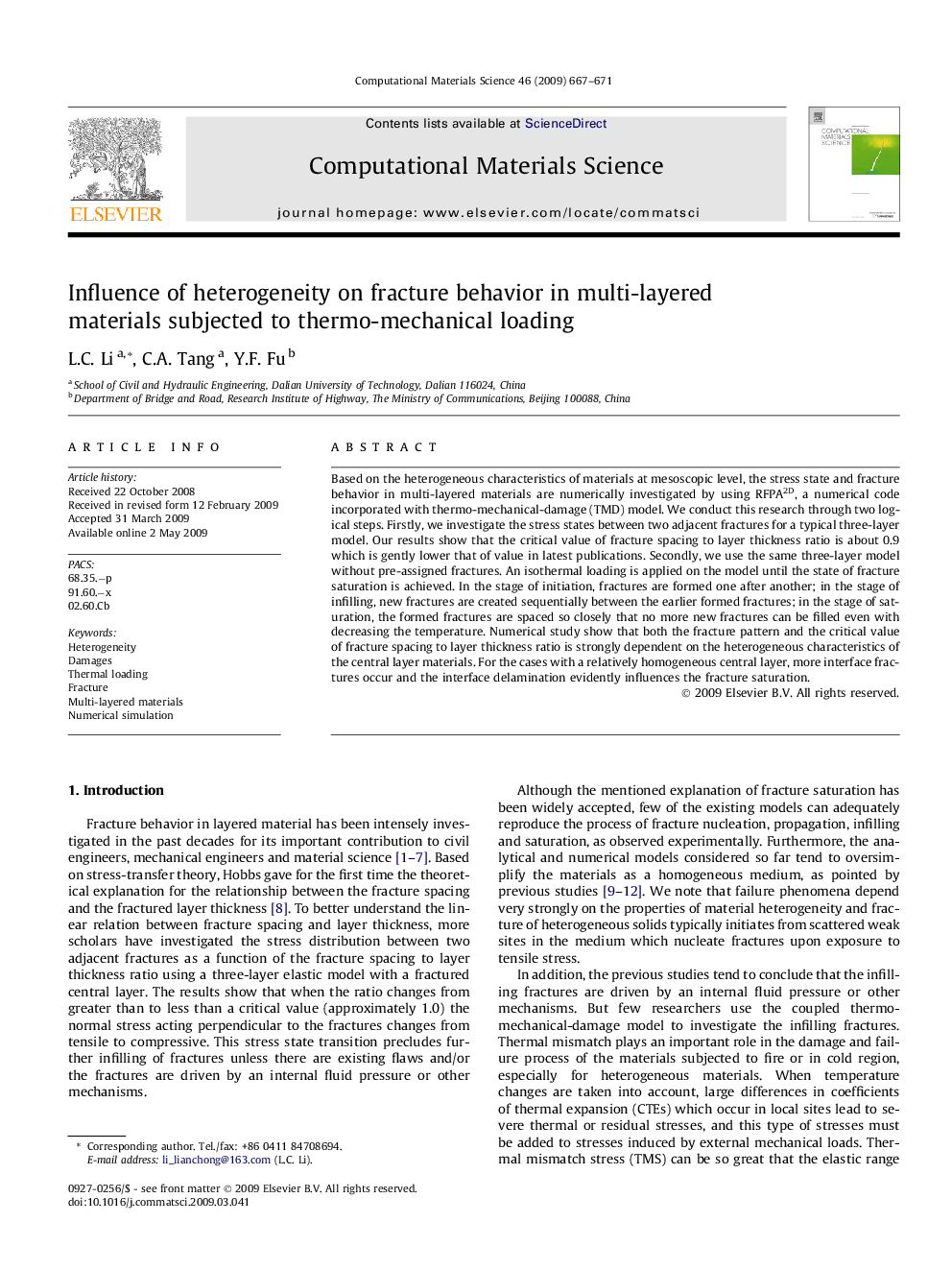| Article ID | Journal | Published Year | Pages | File Type |
|---|---|---|---|---|
| 1563094 | Computational Materials Science | 2009 | 5 Pages |
Based on the heterogeneous characteristics of materials at mesoscopic level, the stress state and fracture behavior in multi-layered materials are numerically investigated by using RFPA2D, a numerical code incorporated with thermo-mechanical-damage (TMD) model. We conduct this research through two logical steps. Firstly, we investigate the stress states between two adjacent fractures for a typical three-layer model. Our results show that the critical value of fracture spacing to layer thickness ratio is about 0.9 which is gently lower that of value in latest publications. Secondly, we use the same three-layer model without pre-assigned fractures. An isothermal loading is applied on the model until the state of fracture saturation is achieved. In the stage of initiation, fractures are formed one after another; in the stage of infilling, new fractures are created sequentially between the earlier formed fractures; in the stage of saturation, the formed fractures are spaced so closely that no more new fractures can be filled even with decreasing the temperature. Numerical study show that both the fracture pattern and the critical value of fracture spacing to layer thickness ratio is strongly dependent on the heterogeneous characteristics of the central layer materials. For the cases with a relatively homogeneous central layer, more interface fractures occur and the interface delamination evidently influences the fracture saturation.
